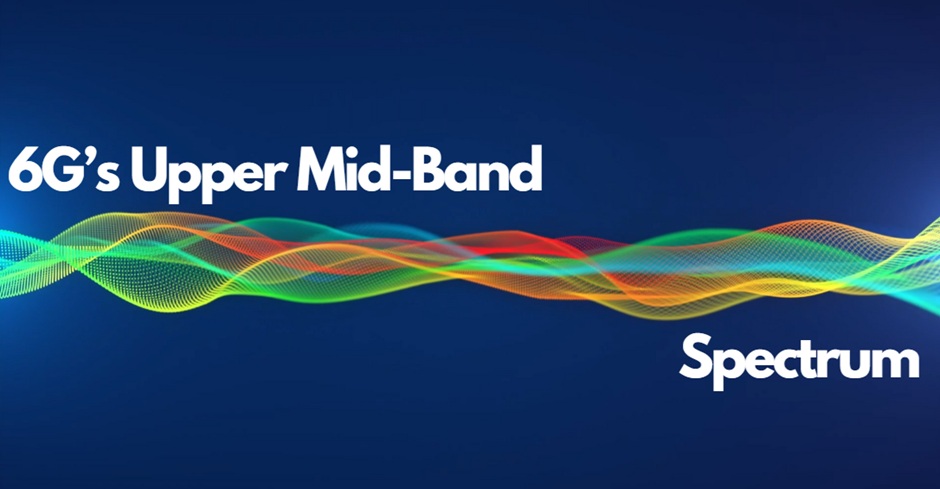Introduction: A New Era for Connectivity
The development of 6G technology promises to redefine the digital landscape. With its focus on wider bandwidths and enhanced energy efficiency, 6G aims to tackle the limitations of 5G while opening doors to innovative possibilities. One of the key discussions surrounding 6G involves optimizing its use of the upper mid-band spectrum, particularly in the 6.4 to 7.1 GHz range. This spectrum offers the potential for increased efficiency and improved user experience, making it a critical factor in the design and implementation of the next generation of mobile networks. So, now let us see Is 6G’s Upper Mid-Band Spectrum the Key to a Better Future along with User-friendly LTE RF drive test tools in telecom & Cellular RF drive test equipment and User-friendly Mobile Network Monitoring Tools, Mobile Network Drive Test Tools, Mobile Network Testing Tools in detail.
Why Upper Mid-Band Spectrum Matters
Think of mobile networks as highways. Just as wider highways reduce traffic congestion and improve the driving experience, increasing the channel bandwidth in mobile networks can significantly enhance user connectivity. For 6G, doubling the maximum channel bandwidth from 100 MHz in 5G to 200 MHz is a game-changing proposal.
The International Telecommunication Union (ITU) recently identified the upper-6 GHz band (6.4 to 7.1 GHz) as suitable for mobile broadband services. This decision is critical because this frequency range provides relatively clear spectrum space, free from the clutter of existing signals. Utilizing these frequencies means that 6G can deliver its promised benefits without interference from older technologies.
Additionally, the characteristics of the 7 GHz carrier frequency align well with the requirements for 200 MHz bandwidths. By leveraging this spectrum, mobile operators can use existing mid-band infrastructure—like the cell sites currently used for 3.5 GHz networks—to minimize construction costs while rolling out 6G. This efficiency could make the deployment of 6G more cost-effective and sustainable for operators worldwide.
Energy Efficiency: A Crucial Focus for 6G
Energy efficiency is becoming a central theme in 6G development. Unlike previous generations, 6G aims to drastically reduce power consumption in both devices and networks. This focus on sustainability is essential for lowering operational costs and supporting environmental goals.
Advanced chipset designs are at the core of this transformation. These new chipsets will enable ultra-low-power operation, ensuring that devices can run efficiently without compromising performance. For network operators, this means reduced energy costs and a smaller carbon footprint.
The Third Generation Partnership Project (3GPP) recently outlined the importance of energy efficiency and sustainability in its initial views on 6G’s key benefits. Alongside familiar metrics like data rate, latency, and reliability, 3GPP has introduced new benchmarks for energy use and introduced capabilities like sensing and positioning. These benchmarks, known as Technical Performance Requirements (TPRs), will define what it takes for a system to be classified as an IMT-2030—a standard for 6G technologies.
Commercial Relevance and Industry Collaboration
For 6G to succeed commercially, its design must address the needs of businesses and consumers alike. This is where 3GPP’s diverse ecosystem plays a vital role. By bringing together mobile network operators, equipment manufacturers, chipset developers, and representatives from various industries, 3GPP ensures that 6G development considers practical applications and market demands.
This collaborative approach ensures that the TPRs remain commercially relevant. For example, the focus on sustainability and energy efficiency aligns with growing consumer demand for environmentally friendly solutions. Similarly, enhancements in data rates and latency support the increasing reliance on mobile networks for critical applications like remote work, telemedicine, and autonomous vehicles.
The Roadmap to 6G
The journey to 6G is well underway. Starting in March 2025, 3GPP will begin outlining the high-level technology and architecture components for the 6G system. These components will include advancements in radio technology, RAN architecture, and migration strategies from 5G. Detailed studies on these technologies will follow in August 2025, laying the groundwork for the development of 6G specifications in Release 21 by early 2027.
By 2029, these specifications will be submitted to the ITU for formal approval as IMT-2030 systems. This timeline aligns with the expectation of commercial 6G deployments by 2030. Throughout this process, close collaboration between 3GPP and ITU will be essential to ensure that 6G meets its ambitious goals and delivers on its promises.
What This Means for the Future
The optimization of the upper mid-band spectrum for 6G represents a significant leap forward in mobile network technology. By addressing the limitations of 5G and focusing on sustainability, energy efficiency, and wider bandwidths, 6G has the potential to revolutionize how we connect and interact with the digital world.
However, the success of 6G will depend on continued collaboration among industry stakeholders, clear alignment with commercial needs, and a commitment to innovation. As we move closer to the era of 6G, the decisions made today will shape the networks of tomorrow.
Conclusion
The shift to 6G is more than just an upgrade—it’s a transformation. By leveraging the upper mid-band spectrum, 6G can provide faster, more reliable, and more sustainable connectivity. As the industry prepares for this next step, the focus on energy efficiency and commercial relevance ensures that 6G will not only meet but exceed expectations. The road ahead is challenging, but with the right planning and collaboration, the future of connectivity looks brighter than ever.
About RantCell
RantCell turns your smartphone into a powerful tool for testing and monitoring networks. It measures important things like signal strength, download speed, and latency in real time, helping telecom providers and businesses find and fix problems quickly.
With RantCell, there’s no need for expensive equipment. It’s an affordable and easy-to-use solution that works well in cities and remote areas. Plus, its cloud platform ensures accurate and reliable results. Also read similar articles from here.

